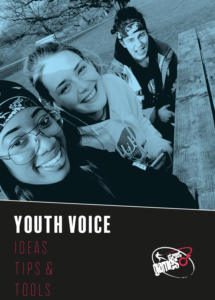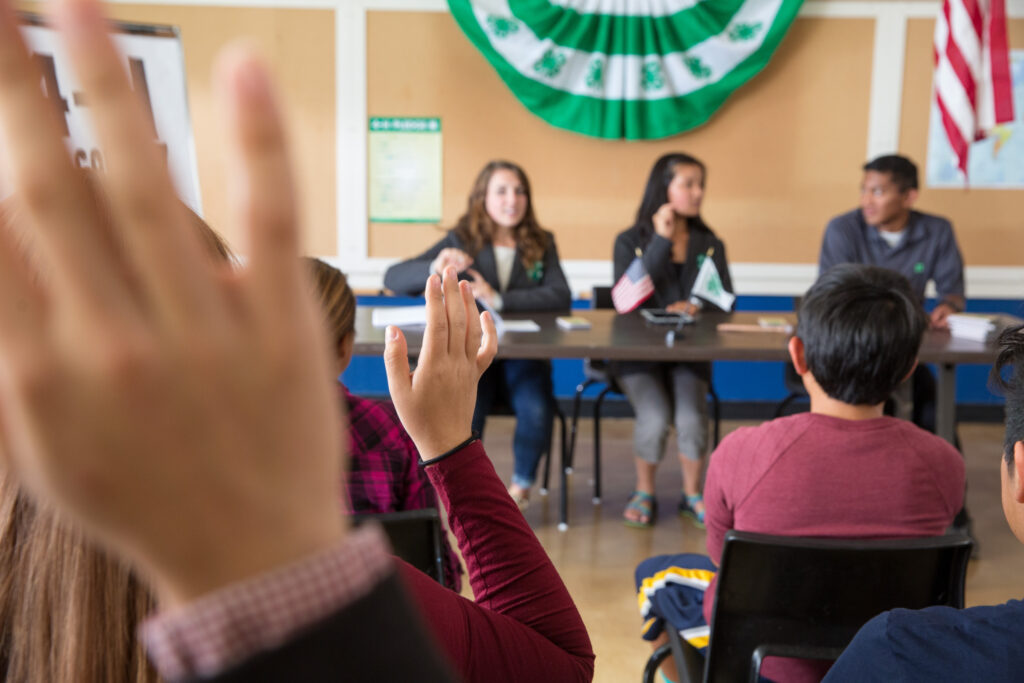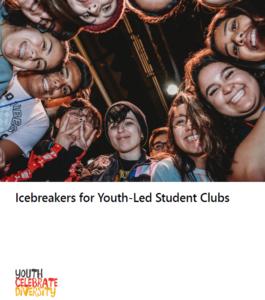Training Youth as Facilitators
Overview
In this Curriculum Jams process, the group focused on materials that adults could use to train youth on how to facilitate intergenerational conversations in their communities.
This content was originally reviewed through a project with Wisconsin Humanities and Community Powered, funded through the NEH’s United We Stand: Connecting Through Culture initiative.
The project worked with various community partners with the goal of training youth to facilitate multi-generational community conversations around hate-based violence and extremism in the US and Wisconsin. The Curriculum Jams process reviewed and recommended resources to help train youth as facilitators. By foregrounding youth facilitation in fostering these important conversations, this curriculum can help promote youth participation in civic life.
Scope
Early on, the planning team identified a need for materials to address several aspects of youth facilitation:
- Identifying a shared purpose, process, and language for conversations
- Establishing roles and relationships of participants, facilitators, and adult supports
- Planning the agenda for the conversation
- Structuring practice sessions
- Learning from previous experience
- Developing community agreements for groups
- Approaching with empathy and emotional intelligence
- Adopting strategies for generating participation and managing groups
- Reflecting on the facilitation experience and making connections to opportunities to use facilitation skills beyond this project
How were these recommendations developed?
13 interviews with individuals with lived experience and/or specialized background related to youth leadership.
9 content sub-themes and 8 delivery sub-themes formed the basis for criteria the group applied to a curriculum search process. The criteria were used to pre-screen and filter identified curriculum resources.
4 training curriculums were selected for further review and discussion.
10 youth, community adults, and educators with lived experience and/or specialized background with facilitation and youth leadership made the following curriculum recommendations.
Deep gratitude to all the youth, community adults, and educators who served as Interviewees, Jam Team Members, and Reviewers!
Resources
Educator Toolbox
The toolbox is made up of recommended resources that program leaders or educators can use to develop background knowledge on the topic.
Facilitation Tipsheet
Icebreakers for Youth-Led Student Clubs
Icebreakers for Youth-Led Student Clubs
Author: Youth Celebrate Diversity
Description: This document includes a list of over 50 icebreakers that helps groups of young people do the following:
- Learn each others’ names
- Explore identity
- Get to know each other
- Check in with one another
- Develop teamwork skills
Audience: Youth and adults
Recommendation: We recommend this list of icebreakers and appreciate that they are organized based on what the facilitator wants to accomplish. We encourage facilitators to think about what kinds of icebreakers would be a good fit for their participants based on their personalities and needs.
Youth Voice Toolkit
Youth Voice Toolkit
Author: Street Games
Description: This document includes descriptions of fun and interactive activities that can engage youth to share their voices in facilitated groups.

Audience: Youth and adults
Recommendation: We recommend trying some of the activities described in this guide to find new ways of engaging youth participants and encouraging them to share their opinions.
Group Facilitation and Problem-Solving
Group Facilitation and Problem-Solving
Author: University of Kansas Center for Community Health and Development
Description: This is a chapter in the Community Tool Box, an online book that covers a range of community-building skills. The chapter covers the following topics:
- Conducting effective meetings
- Developing facilitation skills
- Capturing what people say
- Leading group discussions
Audience: Primarily adults
Recommendation: We recommend this as an additional resource to support conducting meetings and gatherings of all kinds. The section on leading group discussions is particularly helpful for facilitating effective conversations.
Story Circles: A powerful engagement technique
Story Circles: A powerful engagement technique
Author: University of Kentucky Cooperative Extension
Description: This is an article about the story circles method for engaging community dialogues. Story circles get people sharing diverse perspectives on an idea of question. The article includes step-by-step instructions, guidelines, and prompts.
Audience: Youth and adults
Recommendation: We recommend reading the case studies and then following the step-by-step guidelines to incorporate the story circles method within programming.









